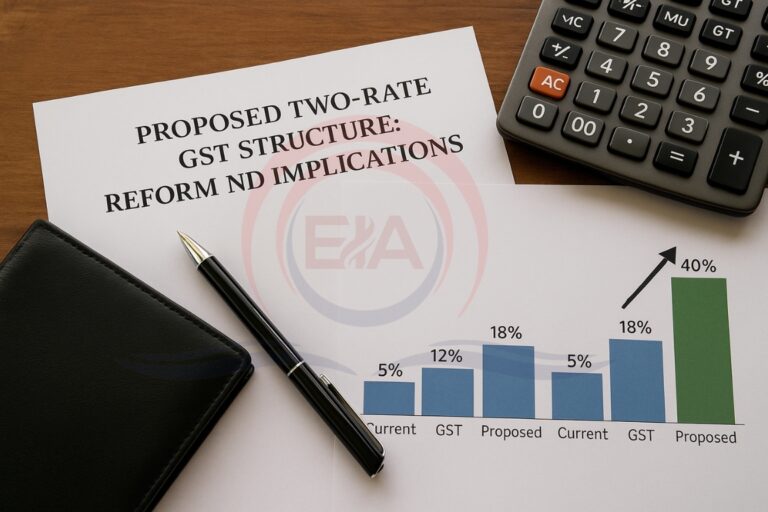Recently, the Group of Ministers (GoM) on Rate Rationalisation endorsed the Centre’s proposal for a simplified two-rate GST structure, marking a step towards “next-generation GST reforms.”
Proposed Changes
- The present GST structure has four main slabs: 5%, 12%, 18%, and 28% (besides exemptions and cess).
- The Centre has proposed to retain only 5% and 18% slabs.
- Key shifts include:
- Items in the 12% slab → largely moved to 5%.
- Items in the 28% slab → mostly shifted to 18%.
- Sin goods (tobacco, cigarettes, online real-money gaming, etc.) → moved to a new 40% slab, replacing the current 28% + cess model.
- This would remove the compensation cess, simplifying the tax system.
Expected Benefits
- Reduced complexity → fewer slabs mean easier compliance and lower litigation.
- Consumer relief → everyday items moving from 12% to 5% will reduce the tax burden on households.
- Transparency → elimination of cess leads to clearer tax incidence.
- Formalisation push → simplification may encourage small businesses to comply.

Concerns for States
- Revenue loss: Moving goods from 12% to 5% and from 28% to 18% may significantly reduce collections.
- Fiscal federalism issue: States like Kerala have stressed the need for a compensation mechanism to offset losses.
- Dependence on higher sin-tax: Revenue stability may rely heavily on the proposed 40% slab.
Current Affairs Link
- In his 2024 Independence Day speech, PM Modi called these reforms a “Deepavali gift” to ease common citizens’ tax burden.
- The next GST Council meeting is expected in September 2024 to finalise the proposal.
- This reform aligns with India’s goal of making GST a “Good and Simple Tax”, as originally envisioned.
Conclusion:
The proposed two-rate GST model represents a move towards simplification, transparency, and consumer relief. However, concerns over revenue security for States need careful addressing. A balanced approach ensuring both ease for taxpayers and fiscal autonomy for States will determine the long-term success of this reform.





